P
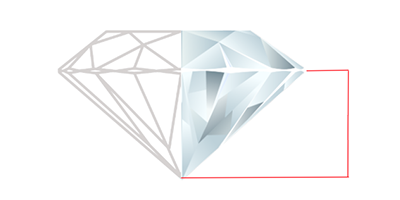
Pavilion (of a diamond)
The pavilion of a diamond is the lower portion of the stone, located beneath the girdle and extending to the culet. Its primary function is to reflect light that enters through the crown, contributing to the diamond’s overall brilliance. The pavilion’s angle is crucial, as a well-cut pavilion helps maximize the diamond's sparkle by bouncing light back through the top of the stone.
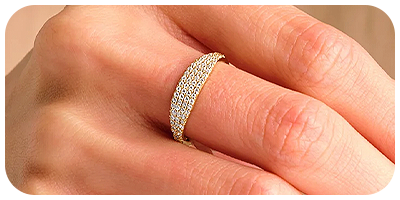
Pavé Setting
A pavé setting is a style where small diamonds or gemstones are closely set together along the band of the ring, with tiny prongs or beads holding them in place. This creates a continuous, sparkling effect, giving the appearance of a surface "paved" with diamonds. Pavé settings are often used in wedding bands, eternity rings, and accenting engagement rings to add brilliance without overwhelming the design.
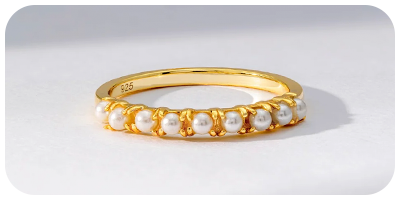
Pearl
Baroque pearls are irregularly shaped pearls that possess a unique and organic beauty. Unlike traditional round pearls, baroque pearls have free-form shapes, making each one distinct. Their non-traditional appearance adds a modern, artistic flair to jewelry, and they are often used in statement pieces like bold necklaces and earrings.
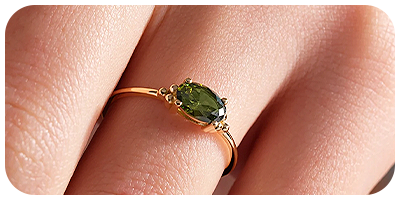
Peridot
Peridot is a vibrant green gemstone, often with a yellowish hue, that has been cherished since ancient times. Known as the "gem of the sun," peridot is believed to bring warmth, positivity, and protection. It is the birthstone for August and is often used in rings, earrings, and necklaces due to its distinctive color and durability.

Platinum
Platinum is a rare and naturally white metal that is highly durable, making it one of the most sought-after materials for fine jewelry. Its dense nature ensures that gemstones are held securely, and its hypoallergenic properties make it an excellent choice for those with sensitive skin. Unlike white gold, platinum does not require rhodium plating, and its natural luster is long-lasting. Platinum is often chosen for engagement rings and wedding bands due to its strength and elegant appearance.
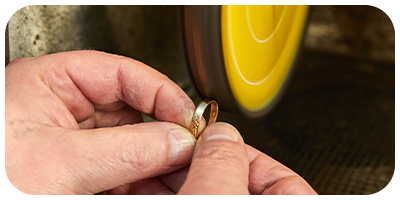
Polishing
Polishing is the process of smoothing the surface of a gemstone to enhance its shine and luster. After a diamond is cut, it is polished to remove any roughness or imperfections, allowing light to reflect more effectively off its facets. High-quality polishing improves the diamond’s overall brilliance and ensures that its facets are well-defined and symmetrical.
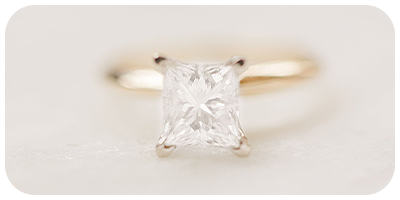
Princess Cut
The princess cut is a modern and stylish diamond shape that features a square or rectangular profile with sharp corners and a brilliant faceting pattern. It is second only to the round cut in popularity and is known for its stunning brilliance and fire. The princess cut is often used in engagement rings, offering a blend of elegance and contemporary design, making the stone appear larger due to its geometric shape.
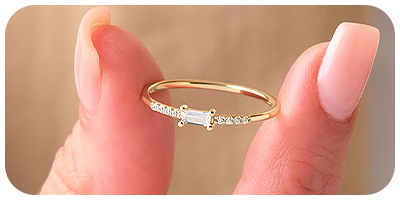
Promise Ring
A promise ring is a symbolic piece of jewelry given to signify a commitment between two people, often as a pre-engagement gesture or to represent a meaningful promise. Promise rings can be simple or elaborate, and they are worn as a sign of dedication and loyalty. They are popular among couples who want to signify their love and future intentions without yet getting engaged.

Prong Setting
The prong setting is one of the most popular choices for engagement rings, where metal prongs (or claws) grip the gemstone, holding it in place. This setting allows the maximum amount of light to enter the stone, enhancing its brilliance and sparkle. Prong settings are known for their classic appearance and are often used to showcase diamonds and other precious stones, making the center gem the star of the design.